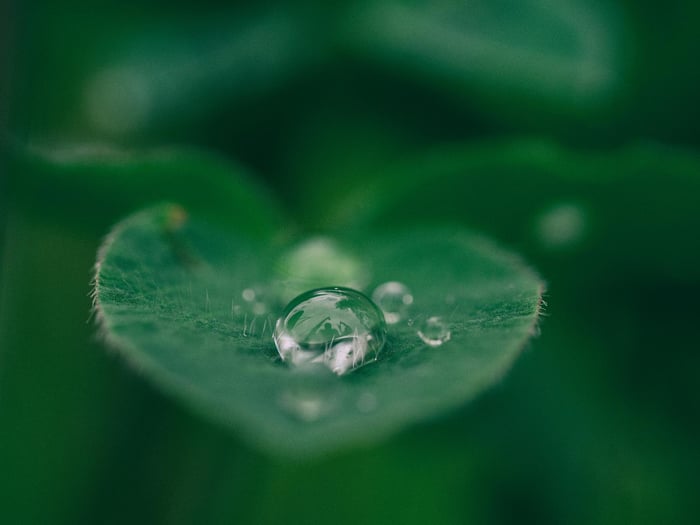As the world is facing the dual challenges of increasing temperatures and water scarcity, sustainable cooling solutions are essential more than ever. The innovative Indirect/Direct Evaporative Cooling (IDEC) offers a promising solution to these challenges. Read more in this blog:
The water footprint of electricity generation
Did you know 1,005 gallons (3,804 L) of water is used to produce 1 MW of electricity through fossil fuel (coal)?
Before digging further to know the efficiency of indirect/direct evaporative cooling solutions, it is important to know how much water we are using to produce the electricity we use every day. The amount of water needed to produce electricity varies by the type of fuel, power-generating method, and cooling method used.
Thermal electricity generation, a category that includes coal, natural gas, and nuclear power, doesn’t just require fuel but also water. And a lot of it. In Europe and the United States, electricity generation accounts for 40% of total water withdrawal.
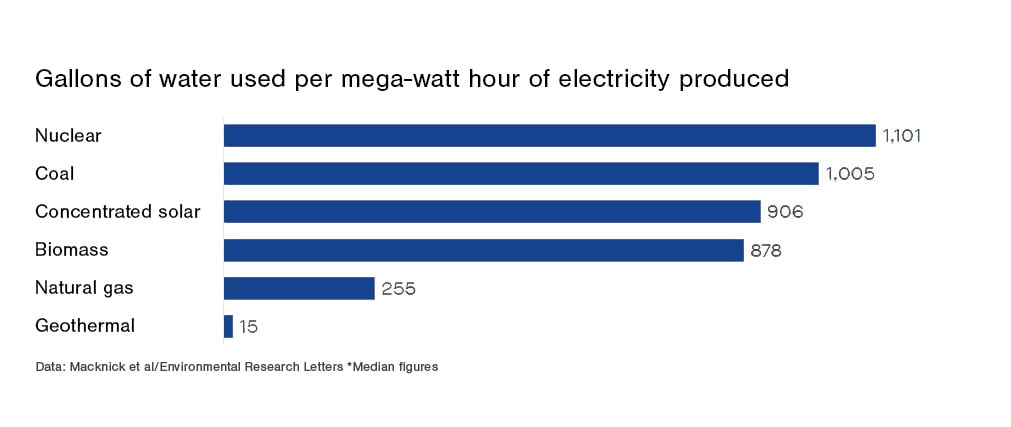
Wasted Potential: Over 60% of electricity generation energy is lost in conversion!
The U.S. EIA (Energy Information Administration) states that over 60% of electricity generation energy is lost when energy is transformed from one form to another and moves from one place to another. Energy consumption is the predominant source of greenhouse gases, responsible for over 75% of global emissions.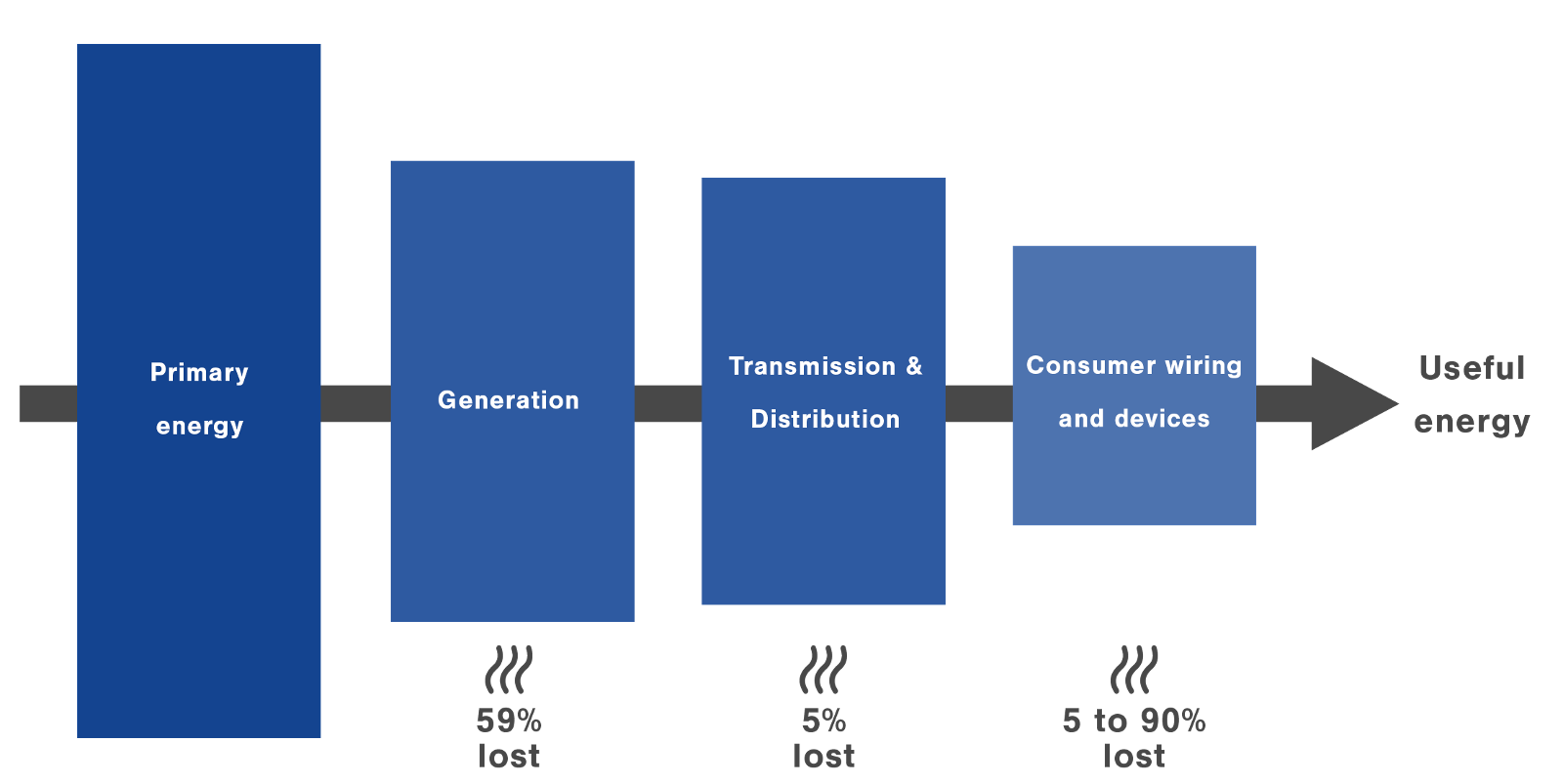 Read more in our blog: Could energy efficiency be the silver bullet to solve climate change?
Read more in our blog: Could energy efficiency be the silver bullet to solve climate change?
How much energy is used to power conventional air conditioning solutions?
According to International Energy Agency, the use of air conditioners and electric fans already accounts for about a fifth of the total electricity in buildings around the world. Powering a typical air conditioner for one day uses about 55 kWh of electricity. Over the next three decades, the use of ACs is set to soar, becoming one of the top drivers of global electricity demand. Without action to address energy efficiency, energy demand for space cooling will more than triple by 2050.
Cooling the World, Warming the Climate: Carbon Emission Dilemma
Recent NREL and XEROX PARC research found that yearly, air conditioning emits 1,950 million tons of CO2. Of this, 531 million tons are from cooling, 599 million tons from humidity control, and 820 million tons from refrigerant leakage, manufacturing, and transport.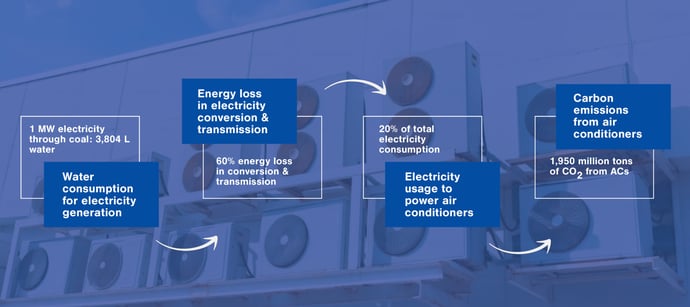
Indirect/direct evaporative cooling: An efficient solution to the cooling dilemma
Thanks to the immense power of water and innovative two-stage evaporative cooling technology, it is possible to supply cooling efficiently. Evaporating 1 m3 of water produces up to 695 kWh of cooling power, whereas traditional AC technology requires at least 250 kW to deliver the same 695 kWh of cooling capacity. To generate 250 kW of electrical power, approximately 2.5 m3 of water is needed along with the necessary fossil fuels and the associated CO2 emissions.
Read more in our blog: Water as a refrigerant.
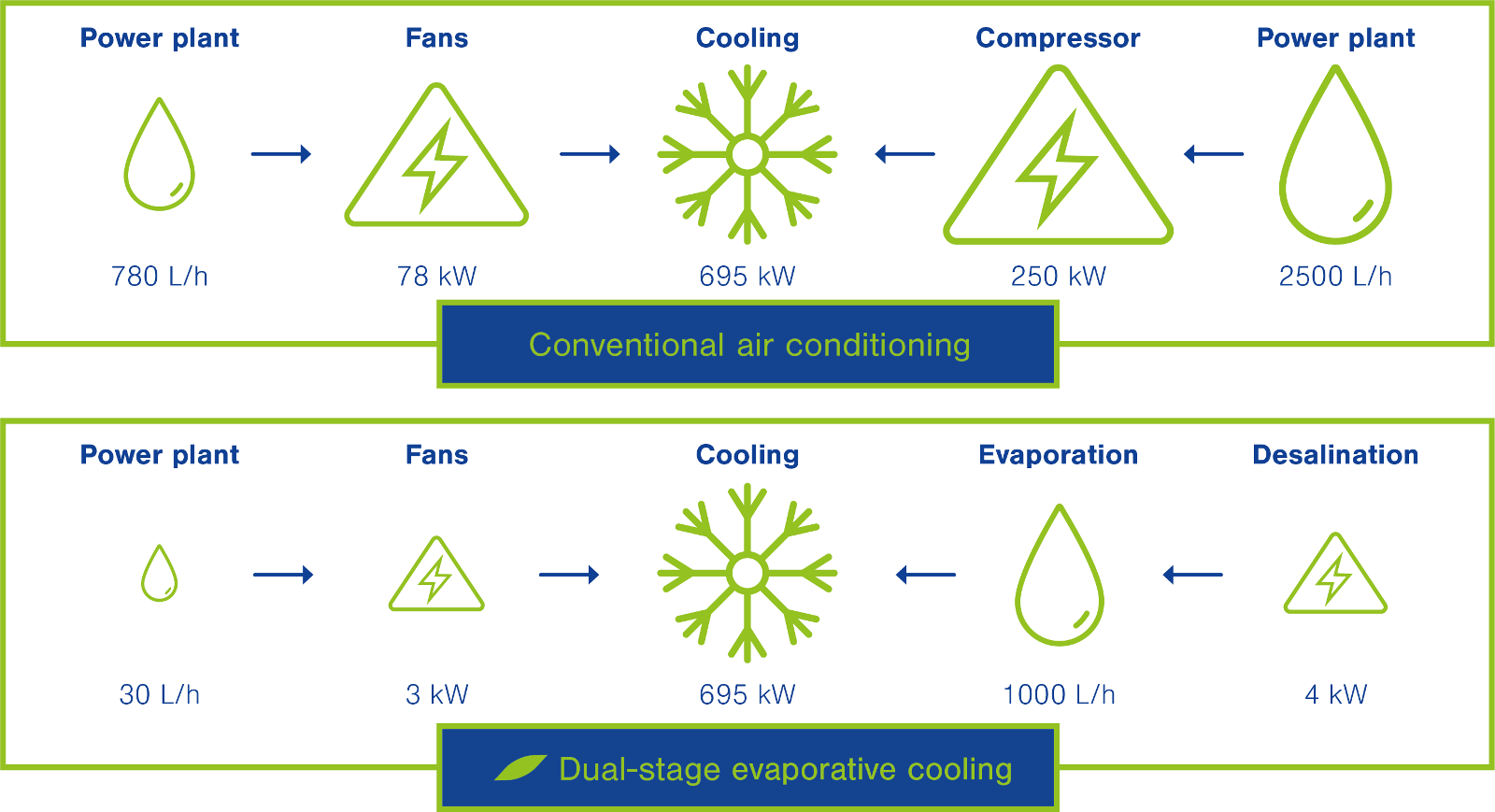
Water serves as a refrigerant in indirect/direct evaporative cooling, replacing harmful refrigerants and enabling natural cooling. Oxycom’s patented two-stage evaporative cooling system, IntrCooll:
- can cool up to 30 °C below the outside temperature,
- with 90% savings on energy consumption compared to traditional air conditioning, and
- 87% reduction in CO2 emissions.
IntrCooll delivers up to 40 kW of cooling power with 1 kW of electricity. IntrCooll EER (Energy Efficiency Ratio) can go up to 40. This so-called EER is a factor 10 higher than traditional cooling systems.
/Book%20cover%20pictures%20(whitepapers%20and%20case%20studies)/EN/Challanges%20and%20opportunities/Challenges%20%26%20Opportunities%20mock%20up%20-%20optimized.png?width=295&height=226&name=Challenges%20%26%20Opportunities%20mock%20up%20-%20optimized.png) Download our whitepaper “Challenges and Opportunities for Energy-Efficient Climate Control” and discover how to create a comfortable and sustainable indoor climate within your production facility.
Download our whitepaper “Challenges and Opportunities for Energy-Efficient Climate Control” and discover how to create a comfortable and sustainable indoor climate within your production facility.
For more information on our innovative evaporative cooling and ventilation technique, check out our webpage, "Evaporative cooling".
